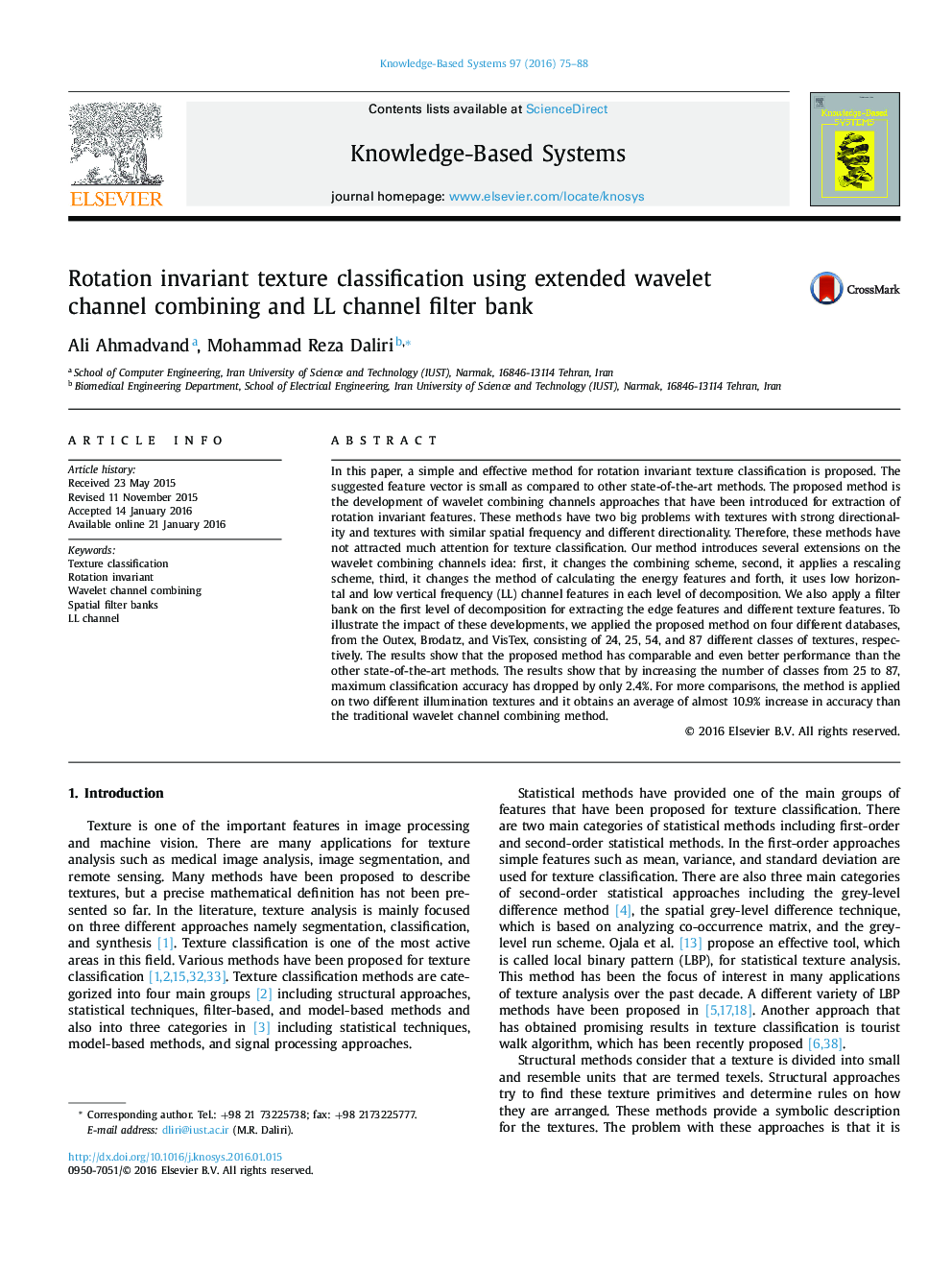| Article ID | Journal | Published Year | Pages | File Type |
|---|---|---|---|---|
| 402135 | Knowledge-Based Systems | 2016 | 14 Pages |
In this paper, a simple and effective method for rotation invariant texture classification is proposed. The suggested feature vector is small as compared to other state-of-the-art methods. The proposed method is the development of wavelet combining channels approaches that have been introduced for extraction of rotation invariant features. These methods have two big problems with textures with strong directionality and textures with similar spatial frequency and different directionality. Therefore, these methods have not attracted much attention for texture classification. Our method introduces several extensions on the wavelet combining channels idea: first, it changes the combining scheme, second, it applies a rescaling scheme, third, it changes the method of calculating the energy features and forth, it uses low horizontal and low vertical frequency (LL) channel features in each level of decomposition. We also apply a filter bank on the first level of decomposition for extracting the edge features and different texture features. To illustrate the impact of these developments, we applied the proposed method on four different databases, from the Outex, Brodatz, and VisTex, consisting of 24, 25, 54, and 87 different classes of textures, respectively. The results show that the proposed method has comparable and even better performance than the other state-of-the-art methods. The results show that by increasing the number of classes from 25 to 87, maximum classification accuracy has dropped by only 2.4%. For more comparisons, the method is applied on two different illumination textures and it obtains an average of almost 10.9% increase in accuracy than the traditional wavelet channel combining method.
